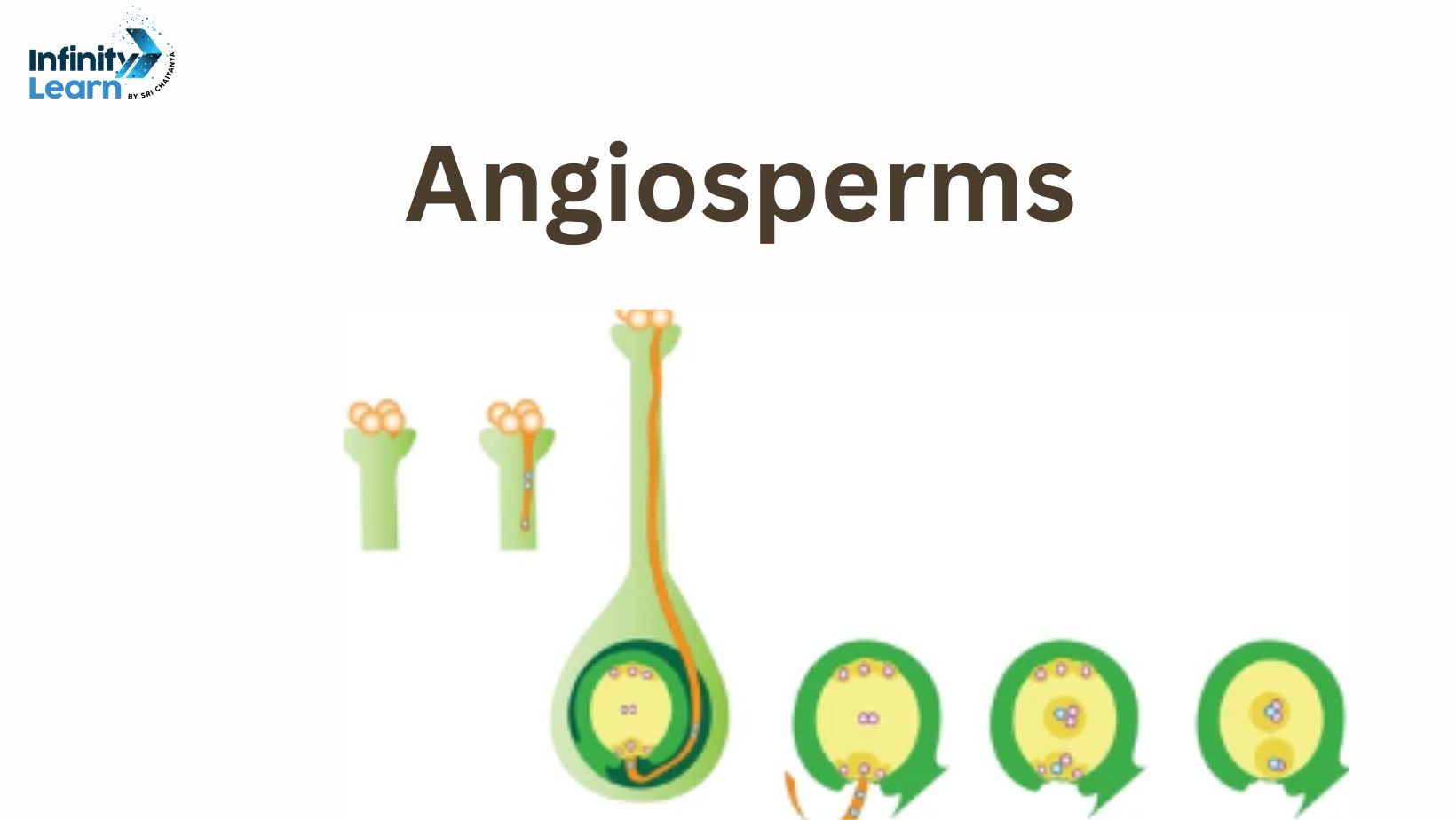Table of Contents
Angiosperms are also known as flowering plants. Angiosperms make up the majority of the plant kingdom. Flowers and seeds are enclosed within a fruit in angiosperms. They have more than 300,000 species. They are the most varied group of plants on the planet. They play a very important role in ecosystems everywhere in the world.
Also Check: Leaf
What are Angiosperms?
Angiosperms are flowering plants. Their seeds are enclosed within a fruit. This feature differentiates angiosperms from gymnosperms, as they have naked seeds which are not enclosed within a fruit. The presence of flowers and fruits are the main features that define angiosperms.
Also Check: Non Flowering Plants

Features of Angiosperms
There are many key features of angiosperms. These are:
- Flowers: Angiosperms produce flowers. These flowers are produced for sexual reproduction. As flowers contain both male and female reproductive organs, pollinators are attracted towards the flower. These pollinators can be bees, butterflies, and birds.
- Fruits: The ovary of the flower develops into a fruit after fertilisation that encloses the seeds. There are many types of fruits and seeds. They are an essential part of seed dispersal in angiosperms.
- Vascular Tissue: Angiosperms have well-developed vascular tissue. These include xylem and phloem. This tissue allows for the efficient transport of water, nutrients, and sugars throughout the plant.
- Double Fertilization: Angiosperms undergo a unique process. This process is known as double fertilisation. In this type of fertilisation, two sperm cells fertilise the egg cell and the central cell within the ovule. It results in the formation of a zygote and endosperm, which nourishes the developing embryo.
- Reduced Gametophyte: Angiosperms have a reduced gametophyte generation, with the female gametophyte and the male gametophyte being contained within the sporophyte generation.
Also Check: Aquatic Plants
Classification of Angiosperms
Angiosperms are classified into two main groups. These are- monocots and dicots.
- Monocots
- Monocots are a group of angiosperms.
- They contain a single cotyledon, or seed leaf.
- They also consist of parallel leaf venation, scattered vascular bundles, and flower parts in a multiple of three.
- Examples of monocots are grasses, lilies, orchids, and palms.
Also Check: Plants adaptation
- Dicots:
- Dicots are a group of angiosperms having two cotyledons.
- They have netted leaf venation, vascular bundles arranged in a ring, and flower parts in multiples of four or five.
- Examples include roses, sunflowers, beans, and oak trees.
Life Cycle of Angiosperms
The life cycle of angiosperms is an essential aspect of botany. Angiosperms represent the largest and most various groups of plants on Earth. Understanding the life cycle of angiosperms provides a deep understanding of their reproduction, which is important for survival.

- Seed Germination
The life cycle of angiosperms begins with seed germination. Seeds contain an embryo plant. This embryo undergoes a series of processes generated by external factors like water, temperature, and light. After successful germination, the embryonic plant develops into a seedling.
Also Check: Life Cycle of Plants
- Vegetative Growth
When seedling enters the vegetative phase, it focuses on growing roots, stems, and leaves. During this phase, the plant establishes its structure. It obtains nutrients and energy from photosynthesis. This phase is critical for the plant’s overall development.
- Reproductive Structures Formation
When the plant starts to mature, it changes from vegetative growth to reproductive growth. Flowers are the reproductive structures produced by angiosperms. Flowers contain male and female reproductive organs, making it easier for the formation of seeds.
- Pollination
Pollination is the transfer of pollen grains from anthers to the stigma of a flower. Pollination can occur through various agents like wind, insects, birds, or animals. Successful pollination is crucial for the production of seeds.
- Fertilisation
After pollination, fertilisation takes place. Germination of pollen grains takes place on the stigma and forms a pollen tube that extends down towards the ovary. The male gametes travel through the tube to the ovule, and fertilisation occurs. It results in the formation of a zygote.
- Seed Development
Fertilised ovules develop into seeds in the ovary. The ovary develops into a fruit. It protects and nourishes the developed seeds. This stage is crucial for dispersing seeds. It ensures the plant’s offspring can establish themselves in new locations.
Also Check: Plants adaptation
- Seed Dispersal
Once the seed is mature, the fruit eases its dispersal. This can happen through various mechanisms, such as wind, water, etc. Successful dispersal increases the plant’s chances of finding new habitats.
- Germination
The life cycle is completed when the dispersed seeds germinate, restarting the cycle. This cyclical process ensures the continuity of angiosperm populations.
Economic Importance of Angiosperms
- Food Source
Majority of food comes from angiosperms. For example, crops like wheat, rice, corn, and fruits.
- Medicinal Plants
Many medicinal compounds are derived from angiosperms. Opium poppy (Papaver somniferum) provides opioids, and Madagascar periwinkle (Catharanthus roseus) is a source of anti-cancer drugs.
- Fiber Production
Angiosperms contribute to the production of fibres used in textiles. Cotton is derived from the seeds of the cotton plant and is a primary source of natural fibre.
- Biofuels
Sugarcane and corn are used in the production of biofuels. The sugars extracted from these plants can be fermented to produce ethanol, a renewable energy source.
- Ecosystem services
Angiosperms play a very important role in ecosystem services. They produce oxygen through photosynthesis, and carbon sequestration, and support biodiversity by providing habitats. They provide food for various organisms.
Angiosperms FAQs
Define Angiosperms.
Angiosperms are flowering plants with reproductive organs.
Write two characteristics of Angiosperms.
Seeds produced by angiosperms are enclosed within the fruit. In seeds, plant embryos have a structure known as cotyledons.
What are the uses of angiosperms?
Majority of food comes from angiosperms. They are used for medicinal purposes and in fiber production.









